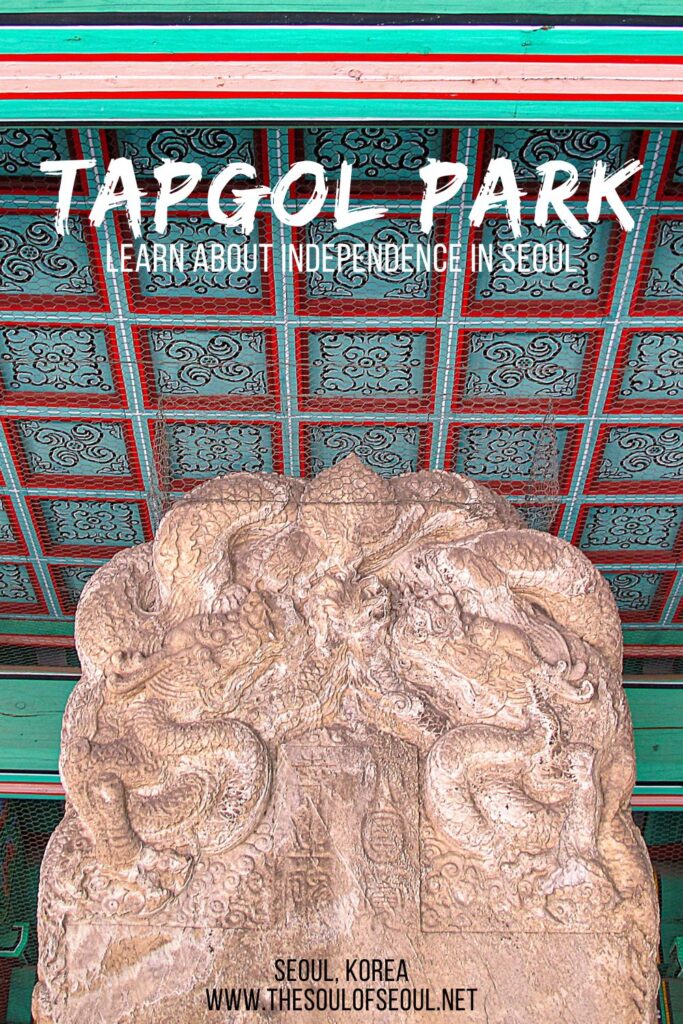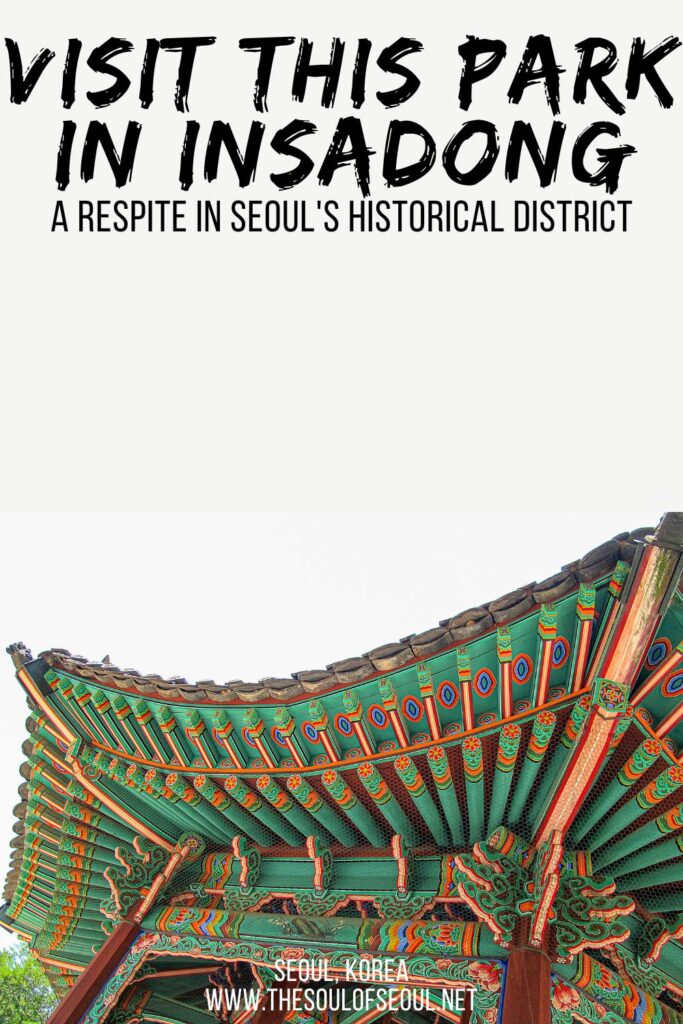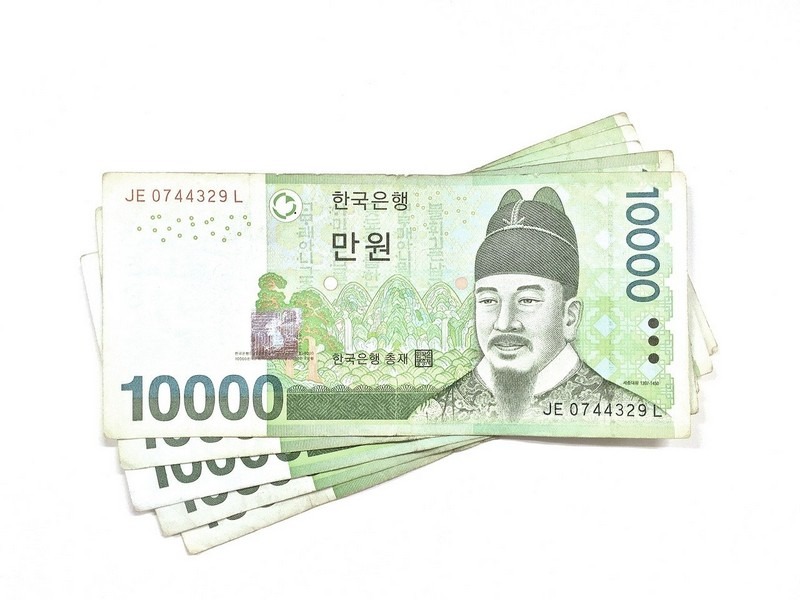Tapgol Park: A Respite In Seoul’s Historical District
Last Updated on April 4, 2024
There’s a park at the southern end of the popular street in Insadong that features a gorgeous pavilion and other historical artifacts. Tapgol Park (탑골공원) is a popular place for older Koreans to gather, chat, and play games and tourists meander in from time to time as well. This is also where the bus picks up to take tourists out to Nami Island so it’s a good spot to know the location of in downtown Seoul. More than that though, it’s an important historical stop to learn about the independence movement in South Korea.
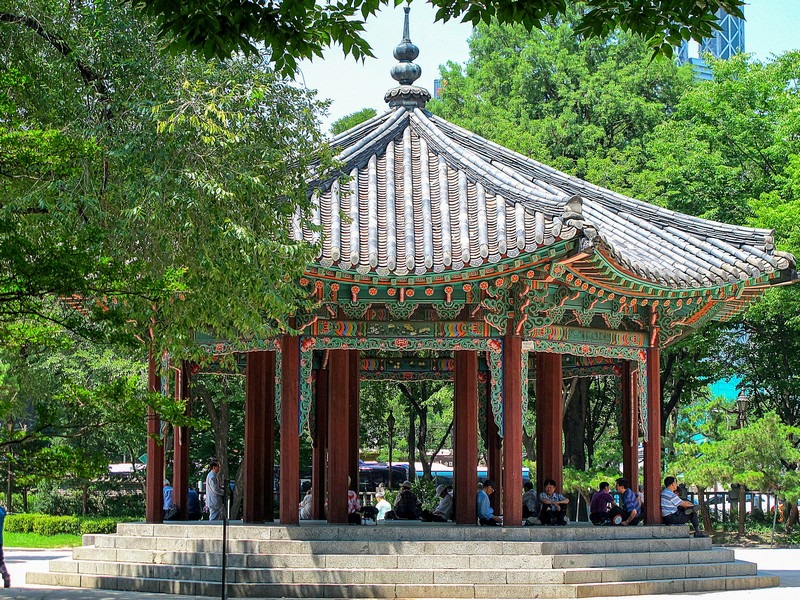
Learn more about Tapgol Park in Seoul:
(This post contains affiliate links, which means I receive a certain percentage of a sale if you purchase after clicking. Thank you for your support.)
How To Get There
Address: 38-1 Jongno 2-ga, Jongno-gu, Seoul (서울특별시 종로구 종로2가 38-1)
Directions: Jongno 3-ga Station, exit 1. Walk straight and there will be an entrance on your left
Basic Info
Admission: Free
Hours: 6:00am – 8:00pm
Amenities: Bathrooms
The History
While it is unclear exactly when Tapgol Park (탑골공원) was first established in the historical Jongno District of Seoul, it’s relevance in the history of the city is unquestioned. The site originally housed Weongaksa Temple and remnants from that time are still visible on the grounds, but the park, established at some point in the late 1800’s, is more widely known as an important location during the fight for independence from Japanese colonization in the early 1900’s.
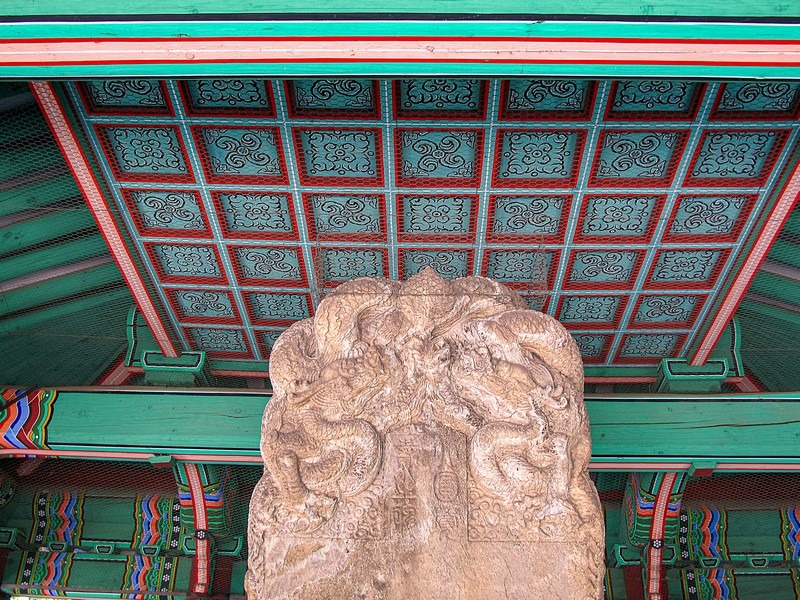
Now, the park is an open and welcoming area at the end of the popular Insadong street where people young and old sit reading newspapers, having conversations and taking a rest from the busy city streets just meters beyond the beautifully traditional front gate.
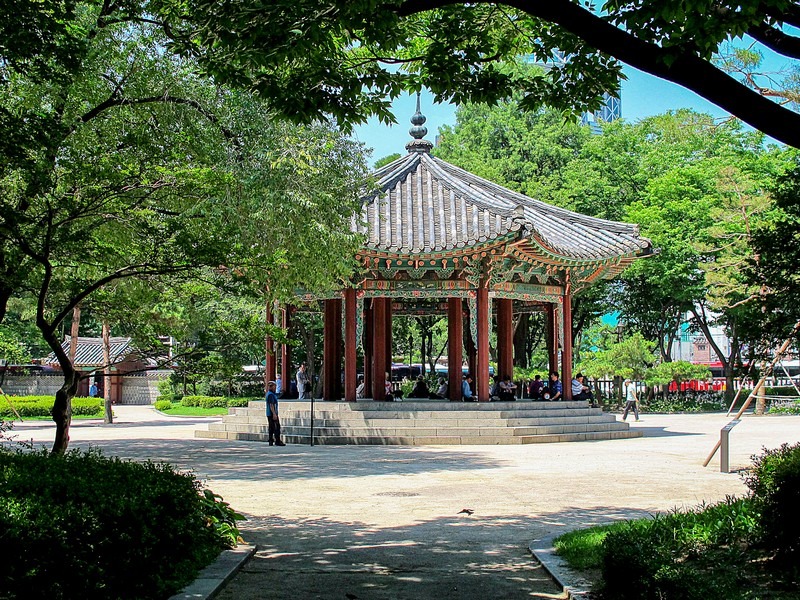
Weongaksa Temple, known as Heungboksa Temple during the Goryeo Dynasty and renamed to Weongaksa during renovations during the Joseon Dynasty was destroyed during the time of Buddhist repression during the reign of Yeongsangun and Jungjon. However, some relics can still be seen on the site. One relic is a tablet. A tortoise stone prop with lotus leaves carved on its back to hold up the tablet was erected under the direction of King Sejo, a devout believer in Buddhism.
After a thirteen story pagoda was completed in 1467, King Sejo held a dedication ceremony at the same time as Yeongdeunghoe, the Buddhist Lantern Festival that celebrates the birth of the Buddha, and had this tablet erected to record the history. The statue is made of granite and marble and is one of only two relics that still exist in the park from the temple.
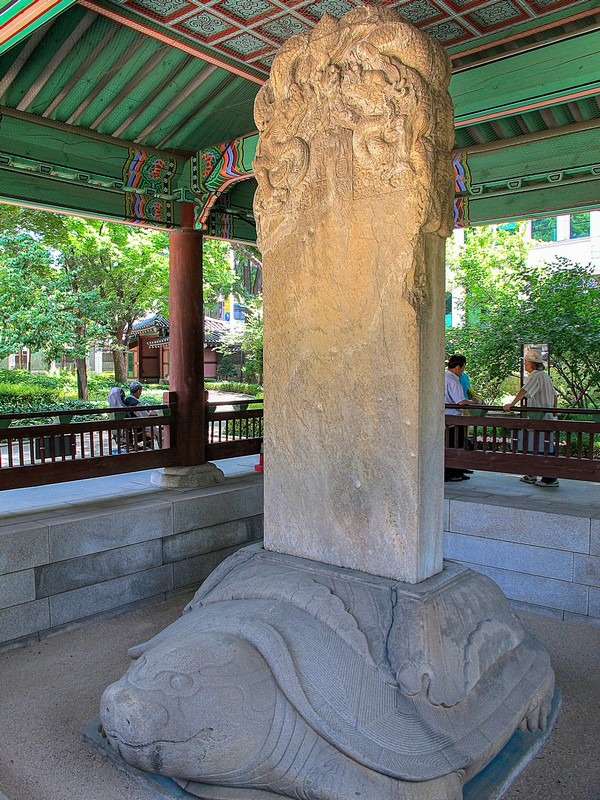
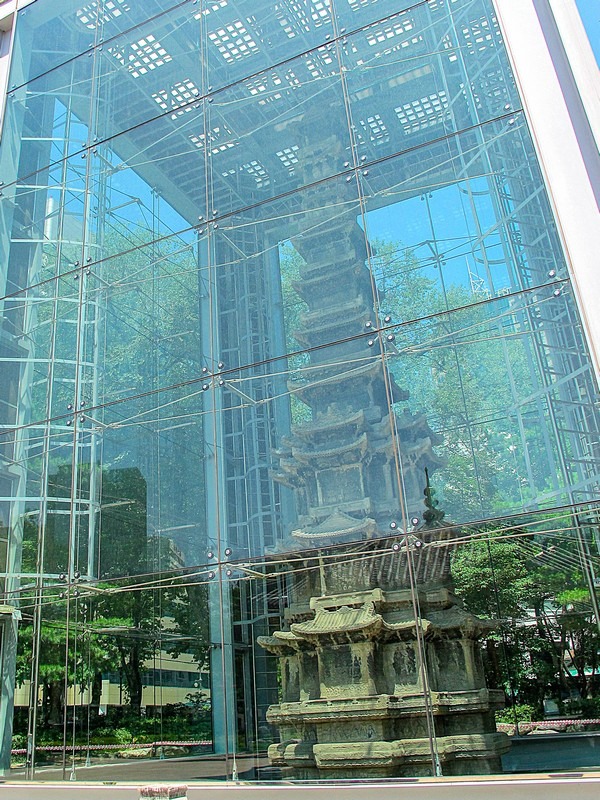
The other relic from the time that Weongaksa sat on these grounds is a 10 story stone pagoda. This pagoda, National Treasure No. 2, was completed in 1467. King Sejo had this pagoda erected “after he experienced the wonder of the sarira incarnation” the sign in front explains. According to historical records, and as the tablet previously mentioned details, the pagoda was once 13 stories, but currently sits at 10.
Carvings of dragons, lotus flowers, monks and other tales of the Buddha surround the pagoda that is made from marble, a material that was rarely used at the time. It is now protected by a large glass enclosure as it is one of the finest examples of a Joseon Period pagoda to still exist in the country. The pagoda really is a must see as it’s intricate and fine details are much better appreciated in person. Few pagodas today have as much detail to enjoy.
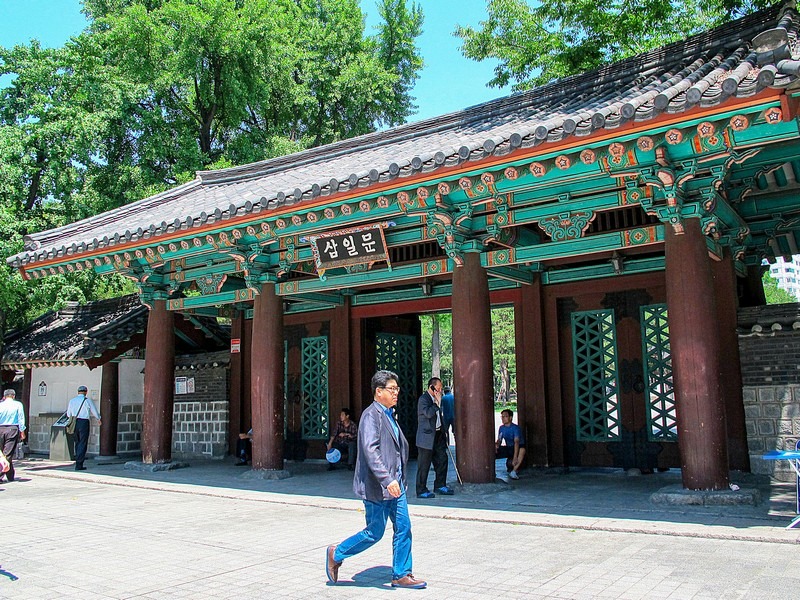
Though these two relics are important artifacts from the history of the area, the park’s most important role in history came years later in 1919 during the March 1st Movement, a fight for Korean independence from Japanese colonialism. On this spot in 1919 on March 1st, college student Chung Jae-yong read Korea’s Declaration of Independence and it set off proclamations of Korean independence around the country which resulted in a year of 1500 protests.
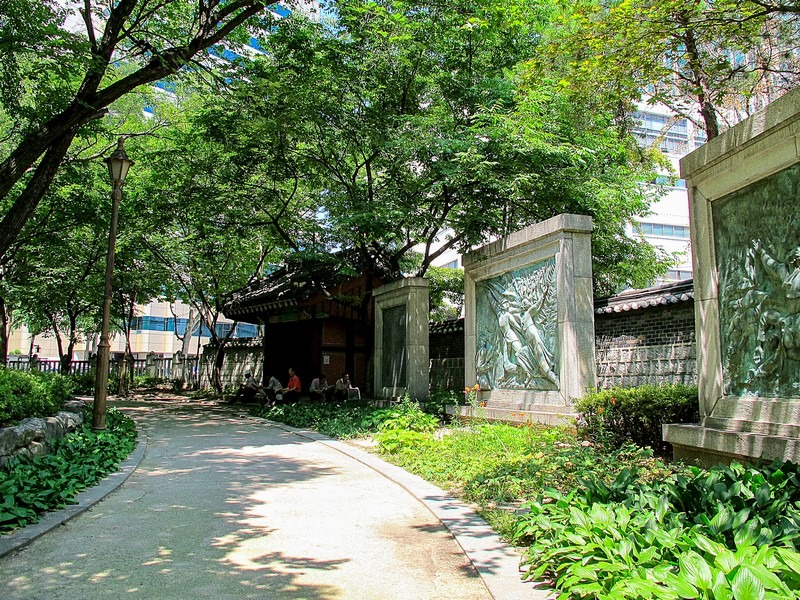
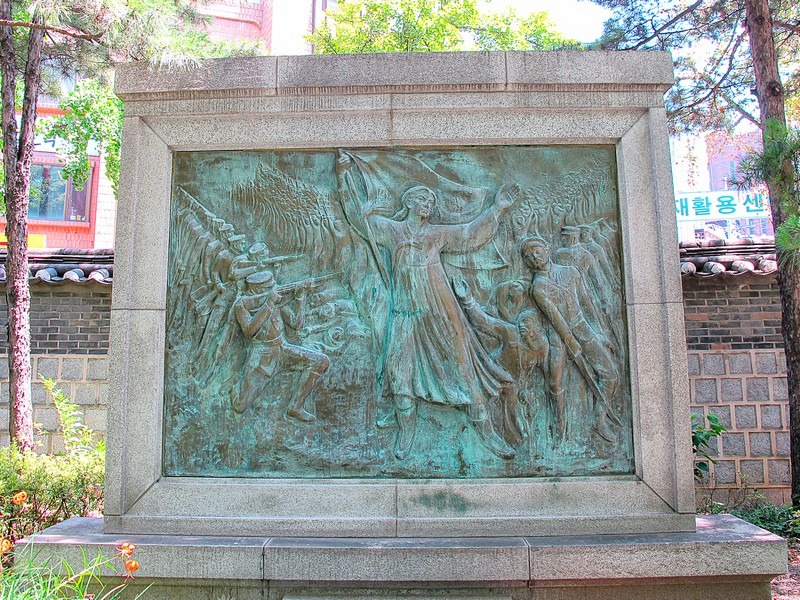
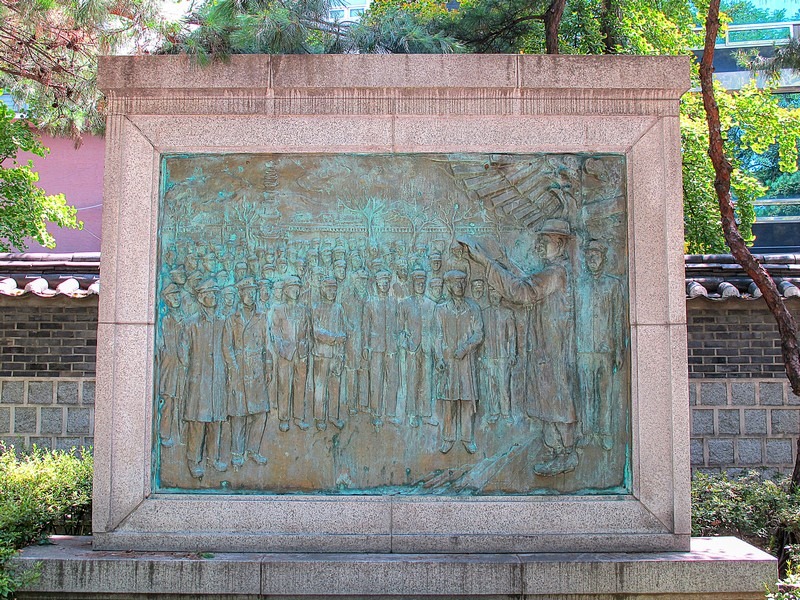
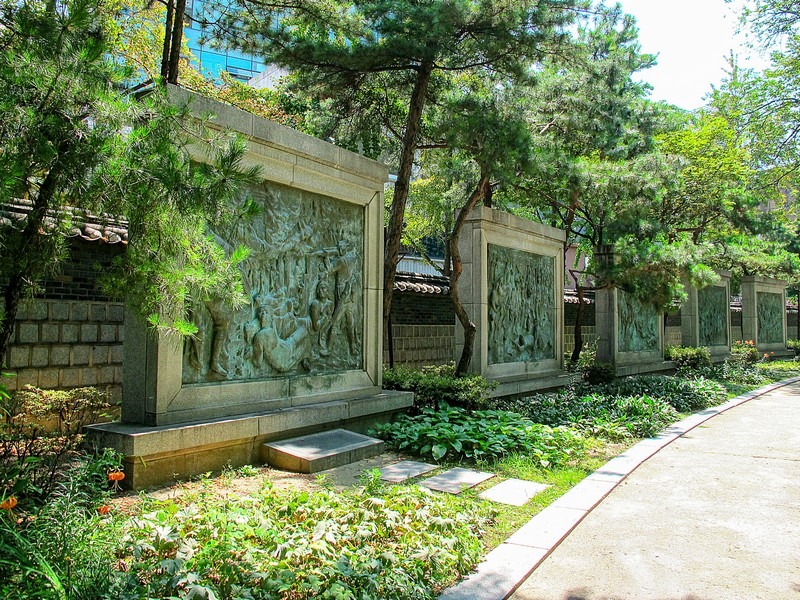
The protests were not welcomed by the Japanese leaders and thousands of people were killed or wounded and even more were rounded up and arrested and many of them taken to the infamous Seodaemun Prison. Inside the park, statues of notable Korean patriots and stone carved depictions of the movement can be seen as well as a large stone carving of the Korean Declaration of Independence. The carving is in multiple languages so most visitors to the park will be able to read and understand what the independence fighters were standing for.
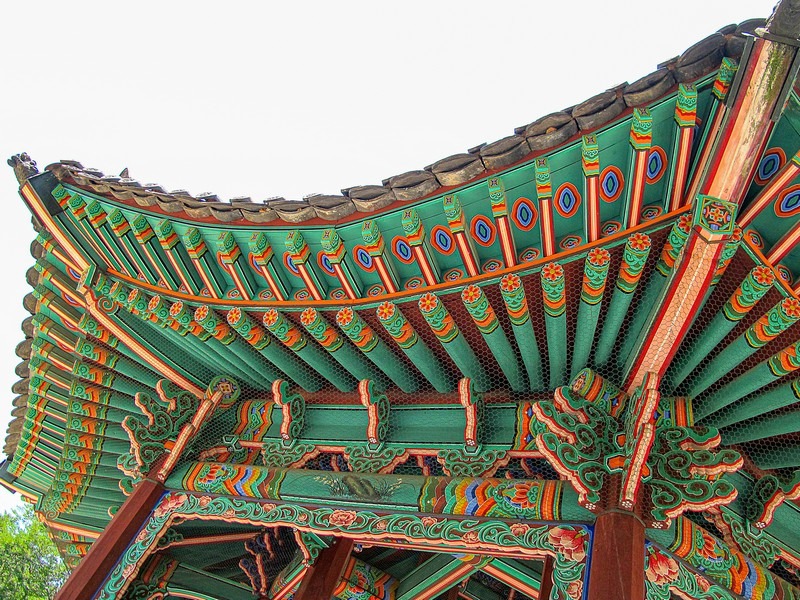
In the center of the park sits the large and colorful Palgakjeong Pavilion. The pavilion was built in 1902 and was where the first declarations of independence were made. Today, old men reading newspapers, taking a break from the heat and chatting line the steps taking in the views of the comings and goings on of the park.
The park rarely sees much action today except for the numerous old gents that head there in the mornings and leave in the afternoons after having some coffee and chatting. Save a few tourists coming and going, it’s a rather quite lot to take a break from the noisy city streets just yonder or the tourist filled alleys of the popular Insadong area.
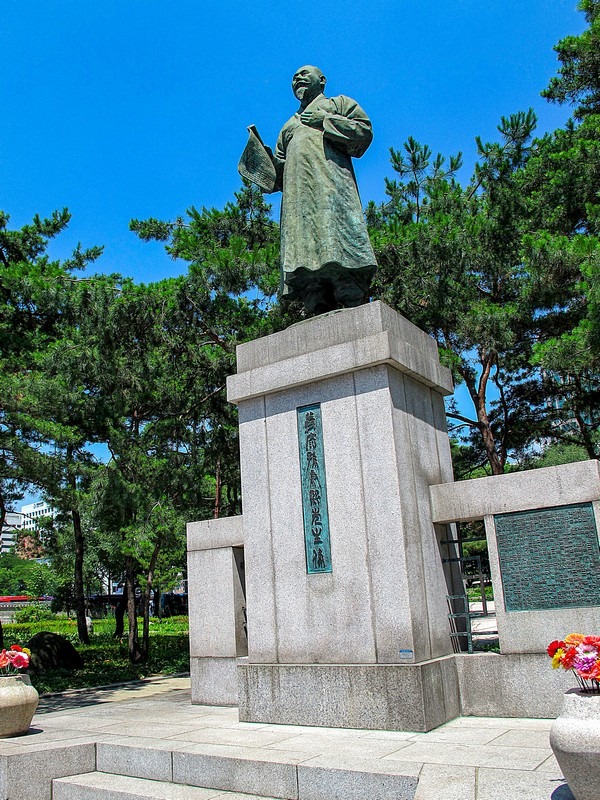

If you’re looking for a quiet place to rest in the heart of the city after walking up, down and all around the Insadong alleys or through the Jongno Markets, this is a great place to take a load of your feet and gain a better understanding of the fight for Korean independence.
Did you like this post? Pin It!
